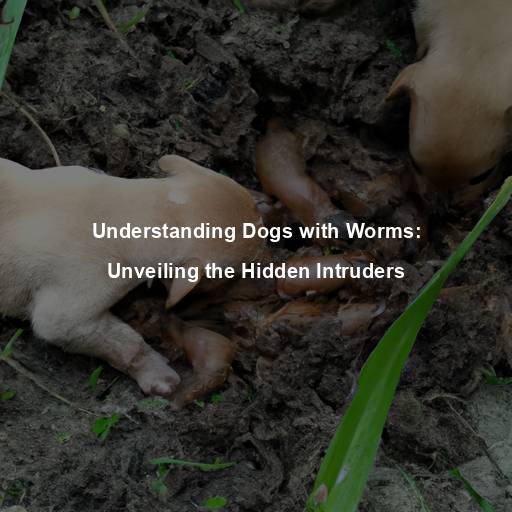What Can Dogs See: Unveiling the Canine Visual World
Last Updated on October 26, 2023 by Evan
Contents [hide]
- 1 The Intriguing World of Canine Vision
- 1.1 The Canine Visual System: A Different Perspective
- 1.2 The Role of Photoreceptors: Rods and Cones
- 1.3 Motion Detection: The Advantage of Flicker Fusion
- 1.4 Enhanced Peripheral Vision: The Wide-Angle Lens
- 1.5 Superior Night Vision: The Secrets of the Tapetum Lucidum
- 1.6 Depth Perception: The Art of Judging Distances
- 1.7 UV Vision: A World Beyond Our Reach
- 1.8 A Visual Bond: The Power of Eye Contact
- 2 Unveiling the Canine Visual World: A Journey Worth Taking
- 2.1 The Anatomy of a Sniffer: A Complex Olfactory System
- 2.2 The Power of Scent: Unraveling the Numbers
- 2.3 Tracking with Precision: The Art of Scent Discrimination
- 2.4 A World of Scents: Multilayered Olfactory Information
- 2.5 Scent as Communication: Sniffing Out Emotions
- 2.6 Unleashing the Potential: Canine Scent Work
- 2.7 The Nose Knows: Unraveling the Mysteries of Scent
- 2.8 A Fragrant Bond: Celebrating Canine Abilities
- 2.9 The Anatomy of Canine Ears: A Symphony of Structures
- 2.10 A Wide Frequency Range: Beyond Human Perception
- 2.11 Sensitivity to Sound: The Delicate Balance
- 2.12 Directional Hearing: Pinpointing the Source
- 2.13 Canine Communication: Beyond Barks and Howls
- 2.14 Music to Their Ears: The Power of Melody
- 2.15 Protecting Their Ears: A Sound Approach
- 2.16 Celebrating Canine Auditory Marvels
- 3 FAQs – What Can Dogs See
- 3.1 What are dogs able to see?
- 3.2 Can dogs see colors?
- 3.3 Can dogs see in the dark?
- 3.4 Do dogs have better peripheral vision than humans?
- 3.5 Can dogs see things that are far away?
- 3.6 Do dogs recognize themselves in mirrors?
- 3.7 Can dogs see television or computer screens?
- 3.8 Do dogs see better than cats?
The Intriguing World of Canine Vision
Step into the enchanting realm of our four-legged friends, where curiosity twists and turns with every wag of a tail. From their unwavering loyalty to their extraordinary talents, dogs have never ceased to bewilder us. Amid our awe for their keen noses and attentive ears, one question lingers: what does the world truly look like through their endearing eyes? Prepare to embark on an enthralling odyssey with us as we unravel the enigmatic realm of canine vision, uncovering the mysteries that reside behind those captivating gazes.
The Canine Visual System: A Different Perspective
When it comes to seeing the world, dogs have their own unique way of perceiving things. Unlike us humans who have a full spectrum of colors at our disposal, dogs have a more restricted visual system. You see, while we can admire the beautiful hues of reds and greens, dogs have a more simplified palette, seeing mainly blues and yellows. It’s intriguing how their dichromatic vision creates a whole new perspective on the world around us.
The Role of Photoreceptors: Rods and Cones
Dogs possess an intricate visual system that boasts two distinct types of photoreceptor cells, namely rods and cones. These remarkable sensory cells play a pivotal role in shaping a dog’s perception of the world around them. The rods, abundant in their retinas, gift our furry friends with an unparalleled ability to see in low-light environments, bestowing them with the wondrous power to effortlessly roam and pursue their nightly escapades. Whether it’s the mystical allure of moonlit adventures or the pursuit of elusive prey, dogs truly possess an extraordinary gift that intrigues and perplexes us all.
Interestingly, dogs have a slightly different visual experience compared to humans due to the composition of their retinas. While humans rely heavily on cones for color vision and sharpness, dogs have fewer of these photoreceptor cells. This means that their ability to perceive fine details and distinguish between colors may be somewhat compromised. However, it’s fascinating to note that this does not hinder dogs from showcasing their incredible visual prowess in many other ways.
Motion Detection: The Advantage of Flicker Fusion
When it comes to perceiving the world around us, dogs definitely have a unique edge. While they may not see the world in the same vibrant colors as us humans, their extraordinary ability to detect motion more than makes up for it. With a flicker fusion frequency that surpasses our own, dogs can swiftly track the path of a tennis ball or pick up on even the slightest shifts in their surroundings. It’s truly mind-boggling how these furry friends become the perfect partners for all of our outdoor adventures!
Enhanced Peripheral Vision: The Wide-Angle Lens
Have you ever noticed how your dog seems to be aware of everything happening around them, even when you think they’re not paying attention? Well, their enhanced peripheral vision is to thank for that. Dogs possess a wider field of view than humans, allowing them to detect movement and spot potential threats from a distance. This visual advantage stems from their eyes’ unique shape and the positioning of their retinas.
Superior Night Vision: The Secrets of the Tapetum Lucidum
Have you ever pondered the enigmatic nocturnal capabilities of our canine companions? Prepare to be astounded as we unravel the perplexing mystery concealed within the depths of their ocular wonders. Nestled discreetly behind their retinas lies the clandestine tapetum lucidum, a gleaming shield of reflection that transforms their vision in the darkness. Picture this: a self-illuminating luminary peering through the dimness, as if armed with an internal torch.
Depth Perception: The Art of Judging Distances
As humans, we rely heavily on our binocular vision to accurately judge distances and perceive depth. Dogs, however, have a different strategy. While their binocular vision is limited, they utilize other cues to estimate distances. Factors such as motion parallax (the apparent movement of objects when an observer moves) and stereopsis (the slight disparity between the images perceived by each eye) help dogs navigate their surroundings with precision.
UV Vision: A World Beyond Our Reach
One of the most intriguing aspects of canine vision is their ability to perceive ultraviolet (UV) light. While humans are blind to this part of the electromagnetic spectrum, dogs possess the necessary photoreceptors to detect UV light. This unique capability opens a whole new world of scents and sights that remain hidden from our human eyes. It’s as if dogs can see a secret layer of the world that we can only imagine.
A Visual Bond: The Power of Eye Contact
There is so much more to the way dogs see the world than meets the eye. While the scientific details may leave us scratching our heads, it’s the emotional connection we have with our four-legged companions that truly captures our hearts. It’s almost like magic when our gazes lock and we feel an unbreakable bond forming. Dogs have this incredible ability to decipher our gaze and recognize our intentions, strengthening the already profound connection we share with them.
Unveiling the Canine Visual World: A Journey Worth Taking
As we conclude our exploration into the captivating realm of canine vision, we are left in awe of the unique perspective our canine companions possess. While their visual world may differ from ours in many ways, it is no less rich and fascinating. From their remarkable night vision to their ability to detect motion and perceive the world in shades of blue and yellow, dogs offer us a glimpse into a visual realm that is truly their own.
Step into the captivating realm of canine sensory perception and prepare to be mystified. Our four-legged companions, with their bewitching eyes and astute instincts, possess an extraordinary ability to navigate the world around them. It is in their remarkable noses, finely tuned to detect scents imperceptible to mere mortals, where their true superpower lies. Prepare to have your mind blown as we explore the mesmerizing world of olfactory wonderment that our furry friends inhabit.
While we have delved into the captivating world of canine vision, we cannot overlook the extraordinary olfactory abilities that dogs possess. Their sense of smell is nothing short of miraculous, allowing them to navigate the world through a symphony of scents. Let us embark on a scent-ational journey and explore the remarkable superpower that lies within a dog’s nose.
The Anatomy of a Sniffer: A Complex Olfactory System
Dogs possess a highly intricate olfactory system that far surpasses our own. Their noses are equipped with an astonishing number of scent receptors, estimated to be around 300 million, compared to our mere 5 million. These receptors are housed in a specialized structure called the olfactory epithelium, located in the nasal cavity. With such a vast array of receptors, dogs can detect and differentiate an extensive range of odors, far beyond our capabilities.
The Power of Scent: Unraveling the Numbers
When it comes to the astonishing power of a dog’s sense of smell, the numbers speak for themselves. Humans, with our meager 0.01% olfactory cortex, pale in comparison to our canine companions, who possess a remarkable 10% devoted to sniffing out the world. These mind-boggling statistics serve as a vivid reminder of just how perplexing and awe-inspiring the canine olfactory system truly is, and the integral role it plays in shaping their perception of reality.
Tracking with Precision: The Art of Scent Discrimination
Have you ever found yourself captivated by the extraordinary skills of search and rescue dogs, as they embark on the mission to locate a missing person? Or perhaps you have been in awe of the innate talent police dogs possess, effortlessly detecting hidden illicit substances? These remarkable displays are a true testament to the profound olfactory abilities dogs possess, enabling them to discern scents with unparalleled precision. By decoding individual odors from intricate mixtures, dogs are able to trail scents across vast distances, isolating and identifying their intended targets with utmost accuracy.
A World of Scents: Multilayered Olfactory Information
While we may perceive the world primarily through our visual senses, dogs experience a tapestry of scents that reveal a hidden dimension of their surroundings. Each scent carries a story, providing dogs with a wealth of information about their environment, other animals, and even human emotions. It’s as if they can read the world through an olfactory novel, with each scent serving as a chapter waiting to be deciphered.
Scent as Communication: Sniffing Out Emotions
Dogs, with their astonishing olfactory prowess, go beyond merely collecting information when they engage in the art of sniffing. It’s a remarkable communication method that surpasses our comprehension. These clever canines have the uncanny ability to perceive alterations in human physiology, like rapid heartbeats or the secretion of anxiety-induced chemicals, all through the captivating language of scents. This extraordinary skill permits them to uncover our deepest emotions, offering solace and encouragement precisely when we crave it.
Unleashing the Potential: Canine Scent Work
Given their extraordinary olfactory abilities, dogs have been trained to put their noses to work in various fields. From tracking and search and rescue operations to detecting diseases like cancer and assisting individuals with disabilities, the applications of canine scent work are wide-ranging and impactful. These remarkable partnerships between humans and dogs harness the power of their noses to improve and save lives.
The Nose Knows: Unraveling the Mysteries of Scent
In the realm of canine exploration, scientists have made some noteworthy strides in demystifying the enigmatic world of dogs’ olfactory system. However, it is abundantly clear that the veils of secrecy surrounding their sense of smell have not been lifted entirely. With a combination of unyielding curiosity and tenacity, researchers endeavor to delve further into the intricate intricacies of a dog’s sniffer, seeking to unveil the hidden marvels that lie within. Such profound insights have the potential to revolutionize domains as diverse as medicine and conservation, offering unprecedented opportunities for mankind to harness the boundless power of our furry companions’ noses.
A Fragrant Bond: Celebrating Canine Abilities
As we conclude our journey through the scent-ational world of a dog’s nose, we cannot help but marvel at their extraordinary capabilities. Dogs possess a sensory superpower that allows them to perceive the world in ways we can only imagine. Their keen sense of smell not only enriches their lives but also enhances our own, deepening the bond we share with these remarkable creatures.
In a world where our senses often take a backseat to technology, it’s easy to overlook the incredible power of our furry friends’ noses. As their noses dance in the air, they navigate a labyrinth of scents, unlocking a world of information that we can only begin to comprehend. From reuniting with familiar smells to sniffing out hidden treasures, our canine companions embark on olfactory adventures that leave us in awe.
But let’s not forget another remarkable sense that often goes underappreciated: their hearing. Dogs possess an auditory prowess that enables them to perceive sounds we can only imagine. From the faint rustling of leaves to the distant whistle of a loved one’s arrival, they experience a symphony of sound that remains beyond our reach.
By embracing the fragrant bond and marveling at their extraordinary abilities, we can deepen our connection with these exceptional companions. So, the next time you catch yourself captivated by your dog’s nose twitching or their ears perking up, take a moment to ponder the intricate world of scent and sound they effortlessly navigate. After all, in their mysterious sensory universe, everyday moments become extraordinary adventures.
Step into the enchanting world of our beloved canine friends and delve into the captivating realm of their extraordinary auditory prowess. In our ongoing journey of unraveling the mysteries of our furry companions, we cannot disregard the awe-inspiring abilities hidden within their delicate ears. Prepare to be astounded as we unveil the secrets of their acute hearing, an astonishing gateway to a symphony of sounds that often elude our mundane human perception.
The Anatomy of Canine Ears: A Symphony of Structures
Dogs possess an incredible auditory system that astounds scientists and leaves us in awe. Their ears, a wonder of nature’s engineering, are masterfully crafted to detect even the faintest of sounds. From the elegantly curved pinna, which acts as a gateway for sound, to the labyrinthine inner chambers, every intricate component collaborates harmoniously to unlock the enigma of their auditory perception. Through an intricate dance of acoustics, the pinna channels sound waves towards the ear canal like a maestro directing his orchestra, setting the stage for the symphony of hearing to commence.
A Wide Frequency Range: Beyond Human Perception
Dogs possess a broader range of hearing compared to humans, allowing them to detect sounds at higher and lower frequencies. While the average human can hear sounds ranging from 20 Hz to 20,000 Hz, dogs can typically perceive frequencies between 40 Hz and 60,000 Hz. This expanded range enables them to detect high-pitched sounds, such as the ultrasonic vocalizations of small animals or even certain electronic devices.
Sensitivity to Sound: The Delicate Balance
Dogs have a remarkable sensitivity to sound, capable of detecting even the faintest of sounds. Their ears are finely tuned to pick up subtle variations in amplitude and frequency, allowing them to discern important auditory cues from their environment. This heightened sensitivity is particularly beneficial for alerting them to potential dangers or detecting the approach of their human companions.
Directional Hearing: Pinpointing the Source
Ever wondered how dogs can locate the source of a sound with such precision? Their ability to determine the direction of a sound is due to a combination of factors, including the shape of their ears and the way they process auditory information in their brains. By comparing the slight differences in the intensity and timing of sounds reaching each ear, dogs can triangulate the origin of the sound accurately.
Canine Communication: Beyond Barks and Howls
Dogs rely on vocalizations as a primary means of communication, and their acute hearing plays a crucial role in this realm. They can discern subtle variations in vocal tones, pitch, and even the emotional nuances behind each bark or howl. By interpreting these auditory cues, dogs can communicate their intentions, convey emotions, and establish social hierarchies within their canine communities.
Music to Their Ears: The Power of Melody
Have you ever noticed how your dog reacts to music? Many dogs display a range of responses to different types of music, indicating that they have an appreciation for melodic sounds. While individual preferences may vary, classical music, soft melodies, or even specially composed music for dogs can have a calming effect on our canine companions. So, go ahead and serenade your furry friend with some soothing tunes!
Protecting Their Ears: A Sound Approach
Given their incredible hearing abilities, it is essential to take precautions to protect a dog’s sensitive ears. Loud noises, such as fireworks or thunderstorms, can be distressing and even harmful to their auditory health. Providing a safe and quiet space during such events and avoiding prolonged exposure to loud environments can help keep their ears healthy and preserve their hearing abilities for years to come.
Celebrating Canine Auditory Marvels
As we conclude our exploration of the captivating world of canine hearing, we are left in awe of the remarkable auditory abilities that dogs possess. From their expanded frequency range to their acute sensitivity to sound and their remarkable directional hearing, dogs navigate the auditory realm with finesse and precision. Their ears are not only gateways to a world of sound but also serve as a means of communication, connection, and joy.
So, the next time you witness your dog’s ears perk up at the sound of your voice or notice them react to the melodies of music, take a moment to appreciate the marvels of their auditory perception. Embrace the symphony of sounds that shapes their world and cherish the unique bond that forms through the language of sound.
FAQs – What Can Dogs See
What are dogs able to see?
Dogs have a visual system that is adapted to their specific needs as scavengers and hunters. They are anatomically and physiologically different from humans, allowing them to perceive the world differently. Dogs have a more limited color spectrum and their visual acuity is not as sharp as ours. They excel in detecting movement, have better night vision, and can see better in low light conditions.
Can dogs see colors?
Yes, dogs can perceive colors, but their color vision is not as vibrant as ours. While humans have three types of color receptors (cones) that detect red, green, and blue wavelengths, dogs only have two types of cones, detecting blue and yellow wavelengths. This means that dogs see the world in shades of blue, yellow, and gray, with red appearing as a shade of brown or gray.
Can dogs see in the dark?
It’s fascinating how dogs possess incredible night vision capabilities that surpass our own. Unlike humans, they have an abundance of rods in their eyes which are specifically designed to detect even the slightest movements and faintest glimmers in dimly lit settings. This exceptional ability empowers dogs to effortlessly explore and even hunt under the cover of darkness, as they effortlessly navigate through low-light environments.
Do dogs have better peripheral vision than humans?
Have you ever wondered why dogs seem to always be one step ahead in detecting things around them? Well, it turns out that their extraordinary field of view might just be the answer. Unlike humans who have a visual range of about 180 degrees, our four-legged friends boast an impressive 240-degree field of view. This means that they have a knack for catching even the slightest movements or objects lurking in their peripheral vision, giving them an edge in detecting what’s going on around them. It’s no wonder they always seem to be one step closer to uncovering life’s little mysteries.
Can dogs see things that are far away?
When it comes to sight, dogs and humans see things through different lens. While humans excel in sharp central vision, dogs have a knack for detecting motion, making them the champions of spotting moving targets. Surprisingly, their visual acuity falls in the range of 20/75 to 20/50, requiring them to cozy up closer to objects to achieve the clarity that humans perceive effortlessly from afar. But hey, dogs have their secret weapons of smell and hearing to level the playing field. So, let’s not underestimate the perplexing nature of our furry friends’ visual superpowers!
Do dogs recognize themselves in mirrors?
Mirror, mirror on the wall, who’s the most self-aware of them all? Dogs, it seems, have mixed feelings when it comes to their reflection. While some embrace the looking glass as a gateway to self-discovery, others simply don’t give it a second sniff. It all boils down to how these furry companions rely on their senses, with scents and sounds taking precedence over their own visual appearance. So, if you catch your pup gazing intently at their mirror counterpart, don’t be perplexed – they might just be contemplating their own canine mystique.
Can dogs see television or computer screens?
Have you ever wondered if your furry companion can actually see what’s playing on your TV or computer screen? While dogs do have the ability to perceive images, their visual experience may differ from ours in some peculiar ways. Due to their higher flicker fusion frequency, the screen that appears steady to us might actually manifest as a perplexing flickering or flashing spectacle to our canine friends. Nevertheless, it’s not all perplexity and confusion, as some dogs can still pick up on moving images and exhibit interest or even react to them, particularly when accompanied by sound. It’s no wonder the world of canine screen-time remains a fascinating and mystifying curiosity.
Do dogs see better than cats?
When it comes to visual prowess, dogs and cats couldn’t be more different. Dogs, bless their furry hearts, have been blessed with superior visual acuity and an uncanny ability to detect even the slightest flicker of movement. That’s why they’re naturals at tracking and hunting. On the other hand, those enigmatic felines, with their mesmerizing gaze, have an impressive advantage in the visual acuity department. Their eyes can pick up the finest details and gauge depth with astonishing precision. It’s incredible how these two species have evolved such distinctive visual skills to match their unique lifestyles.







